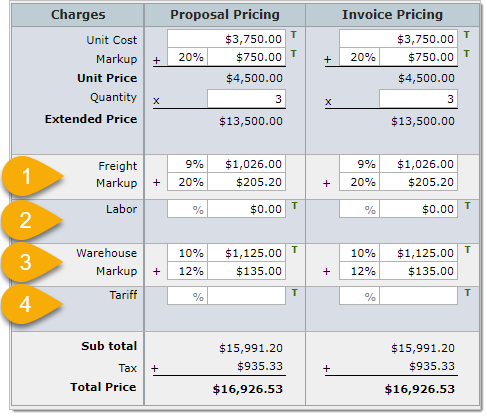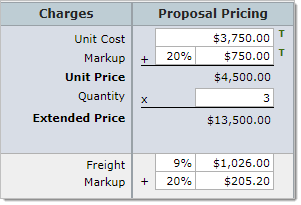Sub-Charges
Your firm can setup a maximum of four sub-charges. The most common sub-charge is freight. Other common ones are Labor, Tariff, Crating, Storage, and Retail Sales Tax.
Sub-charges can have markups or not.

Example (see image below):
In the screen shot below the item cost is $3,750.00.
The markup is 20% or $750.00
The makes the Unit Price $4,500.00
There is a quantity of three, as indicated by the quantity field, so the total extended cost is $13,500.
The Freight percent is 9%. This percent is applied to extended cost so the freight sub-charge is calculated as follows: $3,750 (unit cost) x 3 quantity x 0.09 (9% freight charge) = $1,026.00.
The markup on the freight is also 20% which makes the markup $205.00

Do you Need To Use Sub-Charges?
It is not necessary to use sub-charges for every item in project.
In general, most residential design firms will enter sub-charges for each item because they want to enter the actual sub-charge amounts or close approximations so they can keep their prices as competitive as possible.
Many commercial design firms will not use sub-charges and instead will enter aggregate amounts. For example, if the total cost for the items for a project is $1,000,000.00 and they know that freight usually costs 12% of the price of an item, then they will simply enter a line item for $120,00.00 for freight. This is easier than entering lots of individual freight amounts, especially when the contract states the proposal will show estimated freight charges, but the client will be invoiced for the actual freight amounts.